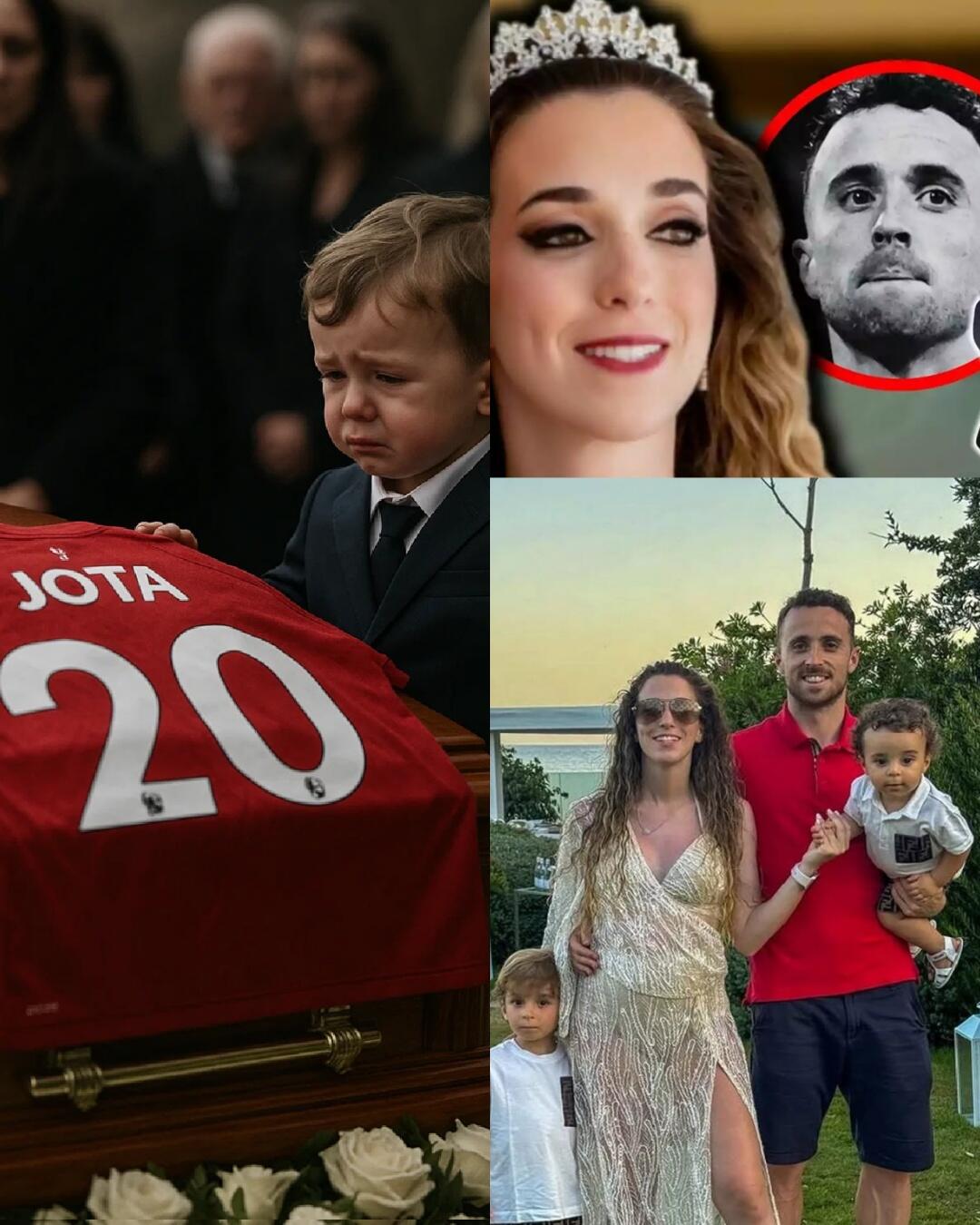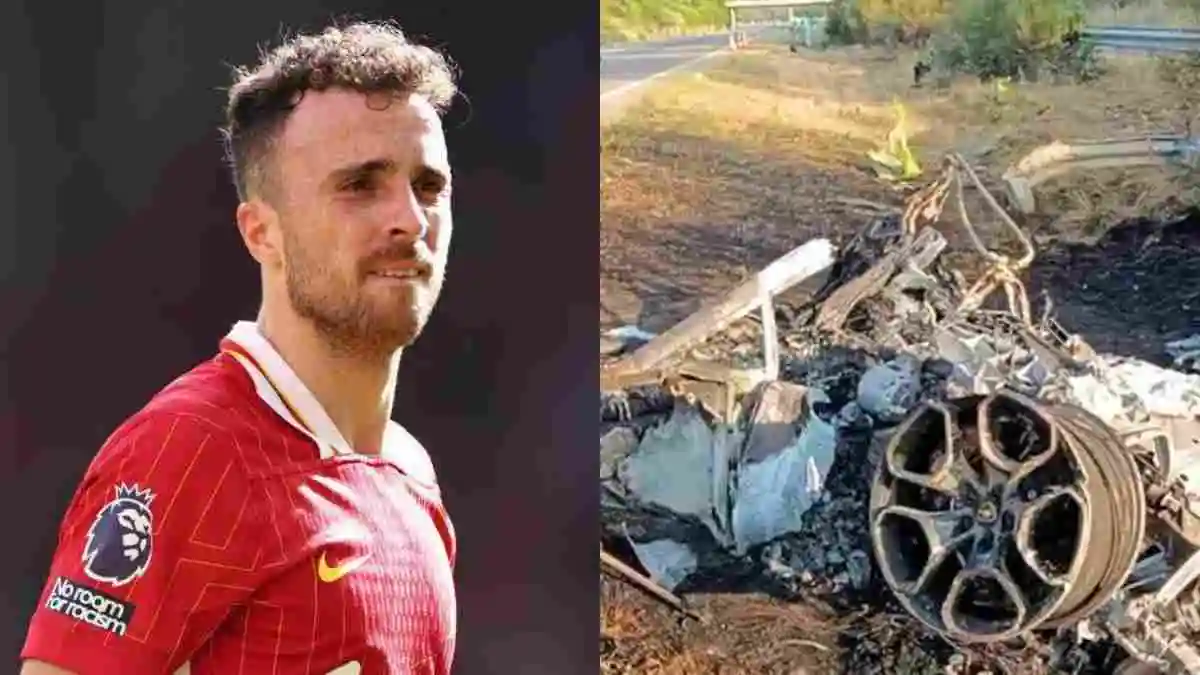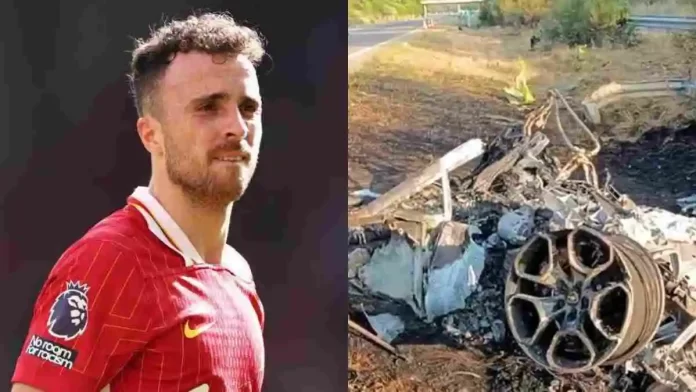BREAKING: Diogo Jota’s Father Removed a 5cm Metal Fragment From the Crash Site Before Police Arrived — He Still Hasn’t Handed It Over
The investigation into the tragic car accident that claimed the lives of Liverpool FC star Diogo Jota and his brother André Silva on July 3, 2025, has taken a shocking turn with a new revelation: Jota’s father, Joaquim Teixeira da Silva, allegedly removed a 5cm metal fragment from the crash site before police arrived and has not yet turned it over to authorities. This development, combined with a lorry driver’s testimony, Rute Cardoso’s demand to reopen the investigation, and a private message from Jota’s mother, has deepened the mystery surrounding the crash on Spain’s A-52 motorway. The withheld fragment raises questions about the cause of the accident and the integrity of the investigation, as the football world continues to mourn.

The Fatal Crash and Initial Findings
The accident occurred around 12:30 a.m. near Cernadilla, Zamora, on the A-52 motorway in northwestern Spain. Diogo Jota, the 28-year-old Portuguese forward for Liverpool FC, and his 25-year-old brother André Silva, a professional footballer for Penafiel, were killed when their Lamborghini Huracan Evo Spyder veered off the road and burst into flames. The Spanish Guardia Civil’s preliminary report attributed the crash to a tyre blowout during an overtaking maneuver, with 100-meter tyre marks suggesting excessive speed. Jota was reportedly driving, and the brothers were traveling from Porto to Santander to catch a ferry to England, as Jota had been advised against flying due to recent lung surgery.
The tragedy, occurring just 11 days after Jota’s wedding to Rute Cardoso, sparked global grief. Tributes flooded in from teammates, fans, and figures like Cristiano Ronaldo, who called the loss “senseless.” Liverpool FC described it as an “unfathomable loss,” and fans left flowers and scarves at Anfield, with a placard reading “Diogo lives forever.”
The Lorry Driver’s Claims and Cardoso’s Demand

Jose Azevedo, a lorry driver who filmed the crash aftermath, disputed the police’s claim of speeding, stating, “I saw the car before it crashed, and it wasn’t going fast. They passed me super calmly.” He also alleged that police instructed him not to share his footage, which showed the burning Lamborghini and his lorry’s tachograph, confirming his presence. Azevedo’s video, with millions of views on X, has fueled public skepticism.
Rute Cardoso, Jota’s widow and mother of their three children, demanded the investigation be reopened, citing Azevedo’s testimony and a screenshot from his video allegedly showing the Lamborghini at a moderate speed. Cardoso’s plea, “My husband was not reckless,” has resonated with fans calling for transparency.
Jota’s Mother’s Message and Timestamp Controversy
Adding complexity, Jota’s mother shared a private message allegedly sent by Jota at 12:22 a.m., reading, “Mum, we’re on the road, all good. Love you, see you soon.” The timestamp, just eight minutes before the reported crash time of 12:30 a.m., raised questions about the timeline, with some X users speculating about delays in reporting or errors in the official account. The message’s authenticity remains unverified, but it has intensified demands for clarity.
The Metal Fragment Revelation
The latest bombshell comes from reports on X and Portuguese media, claiming that Joaquim Teixeira da Silva, Jota’s father, arrived at the crash site shortly after the accident and removed a 5cm metal fragment from the scene before police could secure it. Sources suggest he found the fragment near the wreckage and took it, believing it might be significant. Disturbingly, he has not yet handed it over to the Guardia Civil, raising concerns about potential evidence tampering. The fragment’s nature—whether part of the Lamborghini, road debris, or another vehicle—remains unknown, but its removal could compromise the investigation into the tyre blowout and crash cause.
X posts have speculated that the fragment could point to road hazards or a mechanical failure, with one user stating, “If it’s not from the car, it could prove the road was unsafe. Why hasn’t he given it to police?” Others question his motives, with comments like, “Is he protecting Diogo’s reputation or hiding something else?” The lack of official confirmation about the fragment adds to the uncertainty, but its existence has reignited debate about the crash’s true cause.

Police Response and Investigation Challenges
The Guardia Civil maintains that forensic evidence, including tyre marks and vehicle data, indicates Jota was driving and likely speeding, with the car exceeding the 120 km/h (75 mph) limit. A spokesperson stated, “All tests carried out so far point to the driver being Diogo Jota,” and noted that the final report will be submitted to a court in Puebla de Sanabria. They have not commented on the metal fragment or Azevedo’s allegations of being silenced.
The A-52’s poor conditions—darkness, potholes, and frequent fog—have been highlighted, with a separate accident hours earlier injuring a 60-year-old woman. Experts like Dr. Javier Lopez Delgado suggest that a tyre blowout on a high-performance vehicle like the Lamborghini (top speed 200 mph) could be catastrophic, even at legal speeds, and road conditions warrant scrutiny. The fragment’s removal could hinder analysis of whether external debris caused the blowout.
Public Reaction and Speculation
The revelation about the metal fragment has sparked intense debate on X. Some users support Jota’s father, suggesting he took the fragment to ensure it wasn’t overlooked, with one post reading, “He’s a grieving father trying to find answers.” Others criticize the act, arguing it obstructs justice: “Withholding evidence is reckless—hand it over!” The controversy has amplified distrust in the investigation, with fans questioning whether the police are downplaying road hazards to protect local authorities.
The football community remains in mourning, with Liverpool players like Virgil van Dijk and Andy Robertson attending the brothers’ funeral in Gondomar, Portugal, on July 5. The Bishop of Porto, Manuel Linda, spoke of “solidarity in love” surpassing death, addressing Jota’s family.
Implications for Transparency and Road Safety
The withheld metal fragment raises serious questions about evidence handling and investigative integrity. If it’s unrelated to the Lamborghini, it could point to external factors like road debris, challenging the police’s speed-centric narrative. The A-52’s history of accidents and the timing of Jota’s message add complexity, suggesting multiple factors—road conditions, mechanical issues, or even driver distraction—may have contributed. The Guardia Civil’s silence on the fragment risks further eroding public trust, especially given Azevedo’s allegations of suppression.
Road safety experts emphasize the need for a comprehensive probe. Dr. Lopez Delgado noted, “A 5cm metal fragment could indicate debris on the road or a vehicle defect. Withholding it delays the truth.” The case underscores the challenges of high-profile investigations, where grief, media scrutiny, and social media speculation collide.
Moving Forward
Rute Cardoso’s demand to reopen the investigation, bolstered by Azevedo’s testimony, the timestamp controversy, and now the metal fragment, has intensified pressure on authorities. Jota’s father’s decision to withhold the fragment—whether driven by grief or suspicion—complicates the probe. The Guardia Civil must address these discrepancies, potentially releasing traffic camera footage or vehicle data to clarify the timeline and cause.
As the football world honors Jota’s legacy—65 goals in 182 Liverpool appearances and two UEFA Nations League titles—the focus remains on justice for him and André. Fans chant “Diogo lives forever,” but the truth about the crash, including the fragment’s significance, is critical for closure. The final report will be pivotal in resolving this tragedy’s lingering questions.
